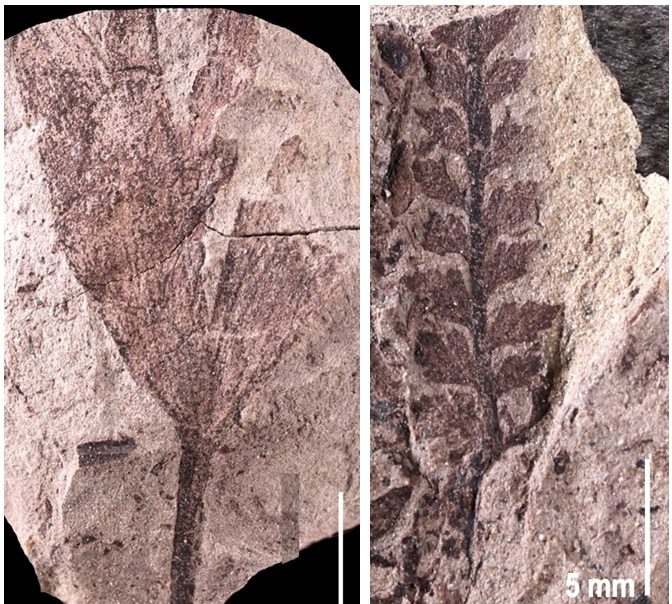Paleontologists Find Ancient Forest Deposit in Northeastern Utah
June 14, 2023

SALT LAKE CITY — A team of paleontologists from the Utah Division of State Parks and the University of Bonn, Germany, recently excavated and are studying a fossil plant locality in northeastern Utah that indicates the presence of a humid forest in northeastern Utah during the Late Jurassic, the time that produced Dinosaur National Monument’s massive dinosaurs.
The site yielded an abundance of wood from a layer of silty rock several feet thick. In the middle of this was a layer with abundant leaf fossils showing what plants were growing in the woods both as trees and undergrowth.
The fossil plants were dug up from the shores of a lake located several miles west of Dinosaur National Monument and occur in the 150-million-year-old Morrison Formation. The compressed leaves are so abundant that complete specimens are sometimes hard to photograph; however, they do sometimes preserve vein patterns and cuticle — the waxy outer layer of leaves.
The leaves collected so far indicate the presence of several types of ferns; now-extinct seed ferns, ginkgophytes, cycads, horsetail; as well as araucarian conifers similar to the modern Norfolk Island pine. The forest was formed by the taller conifer and ginkgo-related trees, and a lush understory was made up of ferns and other plants. When nearly complete leaves first started appearing, the paleontologists were happy to be surprised.
“We hadn’t found too many specimens yet when the first leaf cuticle emerged, and that caught us pleasantly off guard,” Utah Field House of Natural History State Park Museum Curator John Foster said. “We had to scramble to wrap the fossil leaves up before the cuticle dried out and blew away.”
The leaves are well preserved enough that the waxy cuticle is intact on many of them, and that cuticle often preserves details of the underlying cell structure of the original leaves. The cuticles from the site are just now beginning to be studied and will yield information on the biological relationships of the ancient leaves.
“To be able to see cells and stomata of plants that lived 150 million years ago is always a little awe-inspiring,” Foster said.
Carole Gee, a paleobotanist at the University of Bonn, said she is excited by the excavation of another leaf fossil assemblage in Utah.
“Up to now, fossil leaves from the Morrison Formation are mostly known from Montana and Colorado,” she said. “So it is wonderful that the Late Jurassic leaf record of Utah is beginning to emerge.”
Also found among the plant fossils have been long-neck and meat-eating dinosaur bones and, most recently, two leg bones of small bipedal plant-eaters called dryosaurs.
“The bones at the site are in awful shape,” Utah Field House Park Manager Steve Sroka said. “Conditions that preserve bones generally aren’t good for plants, and the conditions that preserve plants often pulverize bones. These bones look like they’ve spent the summer in a campfire – so broken up and fragile, it’s surprising they are identifiable.”
Along with pollen from the site and the very large, silicified logs studied recently in northeastern Utah, the leaf fossil flora suggests that the Late Jurassic in the region was a time of widespread forests with old, venerable trees, a mix of various species, and a significant undergrowth of moisture-loving plants on the forest floor.
The site was first discovered in the late 1980s but was not worked seriously for the plant material until the past few years.
“We’re extremely grateful to Utah State Parks and the Bureau of Reclamation for their partnership and cooperation with this new, ongoing project,” Sroka added.
Preliminary results of the work on the plants are being presented this week at the 14th Conference on Mesozoic Terrestrial Ecosystems and Biota in Salt Lake City, Utah, and in the conference proceedings in the journal The Anatomical Record.
If you found this blog entry interesting, please consider sharing it through your social network.